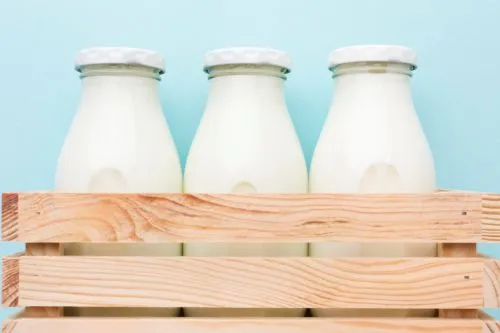
GLP-1 Drugs Reshape Dairy: A Shift Toward Lean Protein and Away from Processed Fats
The global dairy sector is entering a pivotal transformation, driven by a powerful new force: the rise of GLP-1 agonists—weight-loss drugs originally developed for diabetes treatment. According to DairyGlobal, these medications are altering consumer behavior, disrupting demand patterns, and forcing the dairy industry to rethink its product portfolio.
🔄 Dairy at a Turning Point: From Creamy Indulgence to Clean Protein
- GLP-1 users typically reduce caloric intake by up to 20%—approximately 800 kcal/day—leading to a significant drop in consumption of fatty, sugary, and processed foods.
- Meanwhile, lean dairy proteins—such as skim milk, whey, and casein—are gaining favor due to better digestibility and satiety.
“Dairy may benefit from the protein boom—if it moves fast enough,” notes one food systems expert.
📉 Processed Dairy Faces Decline
Forecasts suggest:
- A 4% drop in sales of high-fat, salty, and sugary dairy-based products in the U.S. by 2035.
- Items such as milkshakes, creamy sauces, and sweetened yogurts are increasingly being abandoned in favor of plain, high-protein alternatives.
📊 Retail Data & Consumer Shifts (2023)
- Retail reports show that GLP-1 adoption correlates with:
- Declines in snack and dessert sales.
- Stable demand for simple dairy products.
- A 30% drop in demand for sweet dairy snacks (Canada).
- Surge in purchases of yogurt, cottage cheese, and protein powders.
🧬 Market Forces and Production Implications
- Reduced demand for milkfat may shift dairy farming toward protein yield optimization rather than butterfat.
- Analysts predict that land use may evolve—from crops supporting sweetened dairy (e.g. sugar for flavored yogurt) toward crops promoting milk protein production.
🌍 Wider Implications for Agrifood Systems
- Though dairy is less impacted than snack or beverage sectors, a 0.5–1% production decline is projected over the next decade.
- The opportunity lies in reorienting toward:
- Nutritionally dense, low-fat dairy
- Functional foods aligned with GLP-1 diets
💰 Barriers and Acceleration
- The high cost of GLP-1 medications restricts access primarily to affluent consumers.
- However, with projections of 9% adoption among Americans by 2030, these trends may quickly become mainstream.
- An 85% price drop in GLP-1 drugs is required for mass adoption, at which point dietary shifts could accelerate globally.
⚠️ Industry Response: Innovate or Fade
- Leading dairy companies are urged to:
- Reformulate products to reduce fat and sugar.
- Emphasize purity, portion control, and protein content.
- Delay in action risks obsolescence in a market shifting toward satiating, functional, clean-label foods.
✅ Conclusion: Dairy's Protein Future Is Now
As GLP-1 therapeutics reshape dietary norms, the dairy industry must adapt quickly to a leaner, cleaner, protein-first paradigm. From farm inputs to retail packaging, aligning with low-fat, high-protein demand offers both economic resilience and relevance in a fast-evolving nutritional landscape.
“Consumers aren’t just eating less—they’re eating smarter,” concludes the DairyGlobal report. “Dairy can thrive—but only if it sheds the cream and embraces the protein.”
(Photo: Freepik)




